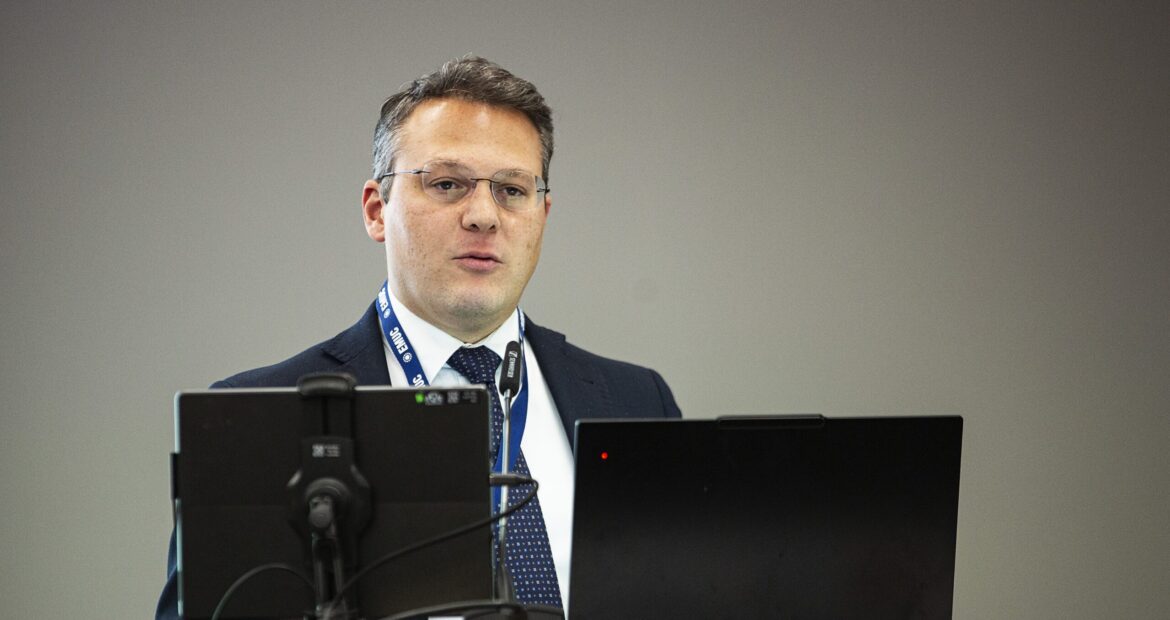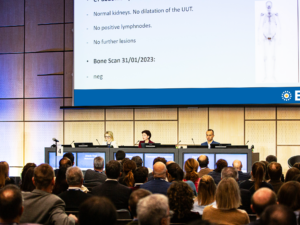At the European Society of Uropathology – EAU Section of Urological Research (ESUP-ESUR) Symposium on Day 1 of EMUC25, expert speakers discussed grade one prostate cancer, new recommendations for adjuvant therapy in renal cancer for pathologists, oncologists and urologists, before tackling a session on artificial intelligence. The session was chaired by Prof. Maurizio Colecchia (IT), Prof. Carmen Jerónimo (PT), Prof. Rodolfo Montironi (IT) and Dr. Maria Raspollini (IT).
AI: New horizons in urological practice
In his presentation “AI for pathology reporting”, Prof. Geert Litjens (NL) reviewed diagnostic, prognostic and predictive applications of AI in urological cancers, highlighting that AI can support cancer detection and Gleason grading at expert level. However, he stresses the continued need for more transparent systems, as seen in the work by Sun et al. in Medical image computing and computer assisted interventions (2025).
Prof. Litjens also emphasised the need for better multimodal integration in AI. “The current AI models lack multimodal integration for accurate biochemical prediction occurrence (BCR)”. He highlights the recent CHIMERA (Combining Histology, medical (radiology) and molecular data for medical pRognosis and diagnosis) Challenge, which aims to advance precision medicine through its uniquely composed multimodal dataset. CHIMERA is a multimodal AI model combining transcriptomics, histopathology and radiology. Tasks include pairing MRI plus pathology of the prostate to predict biochemical recurrence (BCR), and pairing H & E (haematoxylin and eosin staining) plus RNA (ribonucleic acid) data of bladder cancer to predict overall survival. He expects this to have a big impact on AI-driven PCa research.
_____
“The future is not man versus machine but man with machine”, stated Ass. Prof. Giuseppe Fanelli (IT) in his presentation on ‘prostate cancer pathology in the AI era: Impact and horizons’, where he highlighted that AI tools are powerful assistants, but accountability remains with the pathologists. “Vendors and institutions share responsibility through proper validation, monitoring, and compliance with regulatory frameworks.”
He illustrates how AI is being used for computational pathology with its ability to extract clinically actionable knowledge using computational methods from complex, high-dimensional laboratory and clinical data, thereby yielding more precise diagnosis, disease stratification, and selection of patient-specific treatments.
Ass. Prof. Fanelli stresses that data alone is not enough, analysis tools are required. “There are many vendor solutions and general-purpose machine learning tools, but none satisfied all our requirements, so we built our own.” He shares details of the PathML, which is a fully open-source research toolkit able to support the entire digital pathology research workflow.
The next step to advancing pathology digitalisation according to Ass. Prof. Fanelli is the integration of digital slides data with clinical, radiological and genomic information.
You can watch the full presentations via webcast recordings at the EMUC25 Resource Centre.





